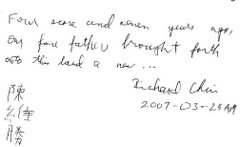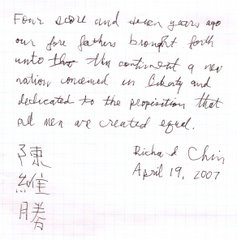We're back from Vancouver. It is good to be home. Having traveled quite a bit in the last three weeks, we've become more aware of how airports and airlines differ in accommodating people with special needs. Hong Kong, Burbank and San Jose airports are amongst those that are the friendliest with the best wheelchair attendants. Southwest Airlines deserve special mention for going the extra mile for disabled passengers. We've flown with Southwest more times than we can count and each time, they have been unfailingly helpful, courteous and unobtrusive, on top of that they also offer $49 fares to LA.
In contrast, at both JFK and Vancouver, our wheelchair attendants were no-shows while at SFO, we had to push Richard up a very steep ramp and then waited from another 20 minutes for the wheelchair attendant to appear. While generally it is possible to push Richard around most airports through security checks, departure gates and baggage claim, there are airports, JFK being the most notorious, where in order to get to the elevators to go down to baggage claim and transportation, one needs to go behind and into restricted areas. This is where the wheelchair attendant becomes vital since he/she has the proper i.d. or key to operate the elevator. Enough of my ranting ....
Richard and I recently heard Dr. Andrew Fire speak on his research on RNAi. Dr. Fire, together with Dr. Craig Mello, received the 2006 Nobel Prize for Physiology or Medicine for the discovery of RNA interference (RNAi). RNAi is a means to "silence" the messenger RNA (mRNA) from giving instructions to make a certain protein. In the case of Polyglutamine Diseases, (including Huntington's, SCAs 1, 2, 3, 6, 7 & 16) RNAi therapy can potentially be used to stop the mutant gene from being expressed. As promising as this breakthrough discovery is, Dr. Fire cautioned that it would take many years before RNAi therapy can become a practical reality. He said that the human physiology is much more complex than that of the C. elegens, a nematode worm, which was his research subject in the RNAi experiment.
You can find the link to his Nobel lecture of RNAi here. Although we probably understood less than half of the highly technical material that Dr. Fire presented, his passion and enthusiasm for the subject matter is easy to see.
Subscribe to:
Post Comments (Atom)



No comments:
Post a Comment